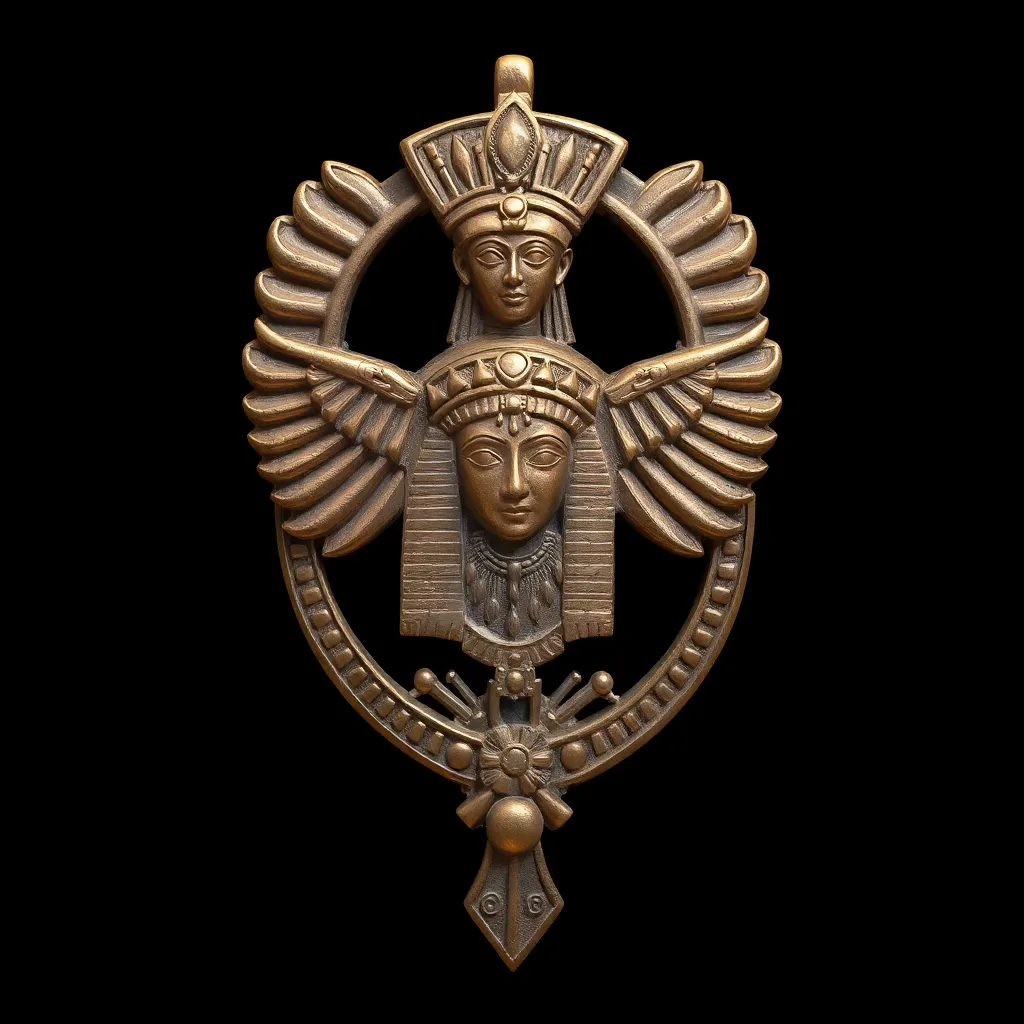The Amulet of Hathor: Goddess of Love and Joy
I. Introduction
In the rich tapestry of ancient Egyptian mythology, few deities are as revered as Hathor, the goddess of love, joy, and motherhood. Often depicted as a cow or a woman with cow’s horns, Hathor embodied the nurturing and protective aspects of femininity. Her significance extended beyond mere love; she was also associated with music, dance, and fertility, impacting both the divine and mortal realms.
This article aims to explore the Amulet of Hathor, a powerful symbol of her essence and cultural importance in ancient Egypt. We will delve into its mythology, design, significance, and enduring legacy, providing a comprehensive understanding of this enchanting artifact.
II. The Mythology of Hathor
Hathor’s origins can be traced back to the early dynastic period of Egypt, where she was worshipped as one of the principal deities. As a sky goddess, she was believed to be the mother of the sun god Ra, and in many myths, she played a crucial role in the creation and sustenance of life.
The symbolism associated with Hathor encompasses:
- Love: She was the embodiment of love and affection, often invoked in matters of the heart.
- Joy: Hathor was believed to bring happiness and merriment to her followers.
- Motherhood: As a nurturing figure, she was revered as a protector of mothers and children.
In ancient Egyptian religion, Hathor was worshipped in temples, and her festivals were marked with music and dance. She was often called upon for blessings in marriage and childbirth, solidifying her role as a vital part of daily life for the ancient Egyptians.
III. The Amulet of Hathor: Description and Features
The Amulet of Hathor is a captivating artifact that reflects the goddess’s attributes and her importance in ancient Egyptian culture. These amulets were often small, portable, and designed to be worn as jewelry or carried as a talisman.
Key features of the Amulet of Hathor include:
- Physical Characteristics: The amulet typically depicts Hathor in her various forms, often showcasing her cow ears or horns, which symbolize her nurturing nature.
- Materials: Amulets were commonly made from materials like gold, faience, or stone, each chosen for their protective and aesthetic qualities.
- Designs and Symbols: Common designs include the sistrum (a musical instrument associated with her), the ankh (symbol of life), and the Eye of Horus, which represents protection and health.
IV. The Purpose and Significance of the Amulet
The Amulet of Hathor served multiple purposes in ancient Egyptian society, reflecting the multifaceted nature of the goddess herself.
Among the significant attributes of the amulet are:
- Protective Qualities: The amulet was believed to provide protection against evil spirits and misfortune, safeguarding the wearer.
- Ritual Use: During various rituals, the amulet was utilized to invoke Hathor’s blessings, especially in ceremonies related to love and fertility.
- Symbol of Love and Fertility: Wearing the amulet was seen as a way to attract love and enhance fertility, making it a popular choice among women seeking to conceive.
V. Historical Context and Use of Amulets in Ancient Egypt
Amulet-wearing was a widespread practice in ancient Egypt, deeply embedded in their beliefs about the afterlife and protection. These small tokens were considered vital for ensuring the safety and well-being of individuals.
In comparison to other Egyptian amulets, the Amulet of Hathor stood out due to its unique association with love and joy, unlike protective amulets such as the Scarab, which focused on rebirth and resurrection.
Numerous archaeological discoveries have unearthed Amulets of Hathor in tombs, often found with women who sought her blessings in the afterlife, further illustrating her significance in both life and death.
VI. The Amulet of Hathor in Modern Times
Today, there is a renewed interest in Egyptian mythology and the symbolism of ancient artifacts. The Amulet of Hathor has become a popular motif in contemporary jewelry, capturing the imaginations of those who seek its rich history.
In modern spiritual practices, the amulet is often used for:
- Affirmation of Love: Many people wear the amulet to invoke love and happiness in their lives.
- Artistic Expression: The designs of the amulet have inspired artists, leading to its representation in various forms of art and fashion.
- Spiritual Significance: Practitioners of neo-paganism and modern spirituality often incorporate the amulet into their rituals as a means to connect with the energies of love and joy.
VII. Cultural Impact of the Amulet of Hathor
The cultural impact of the Amulet of Hathor extends far beyond ancient Egypt, influencing literature, art, and popular culture worldwide.
As a symbol of love and joy, the amulet has been reinterpreted in various contexts:
- Literature: Many authors have drawn inspiration from Hathor’s mythos, weaving her stories into their narratives.
- Art: Contemporary artists often explore themes of femininity and joy through the lens of Hathor and her amulet.
- Global Interpretations: The amulet has found its way into different cultures, often adapted to resonate with local beliefs and traditions.
VIII. Conclusion
The Amulet of Hathor encapsulates the essence of one of ancient Egypt’s most beloved goddesses. Through its protective qualities and associations with love and joy, it has left an indelible mark on the cultural landscape, both in ancient times and today.
Reflecting on the enduring legacy of Hathor and her amulet invites us to explore further into the world of ancient Egyptian mythology and the profound meanings embedded within these artifacts. As we continue to appreciate and study these symbols, we uncover the timeless nature of love, joy, and the divine feminine that Hathor represents.




